Original Author: Biteye Core Contributor Viee
Original Editor: Biteye Core Contributor Denise
From spot ETFs, to foundations and Vitalik Buterin, to listed companies and exchanges.
The holding pattern of ETH is completely different from a few years ago.
This article will help you quickly understand: Why study holdings? What is the current situation of ETH holdings?
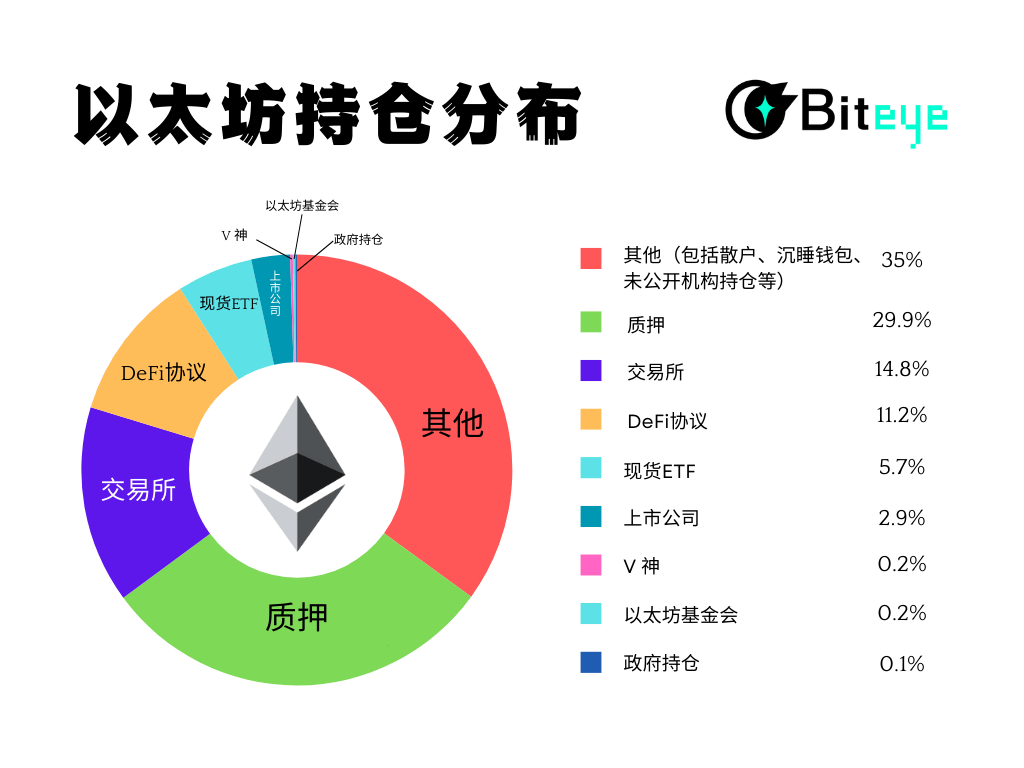
Why is it important to study holding structures?
Everyone knows that narratives in the crypto market often change quickly, so:
- Who is buying? How much have they bought?
- Who is selling? Where is the selling pressure concentrated?
- Which funds are locked up long-term, and which funds might flow out at any time?
These questions determine the price elasticity of ETH and the potential rise and fall in the next cycle.
Taking Bitcoin as an example, the incremental buying from ETFs has made Wall Street capital part of the price floor. Ethereum is following the same path.
Spot ETFs
In the past year, the most important funding channel for Ethereum has been spot ETFs.
As of August 28, the nine spot ETFs in the U.S. collectively hold about 6.9 million ETH, accounting for 5.75% of the total supply (approximately 120.71 million ETH). The significance of this funding goes beyond its scale; it is:
"Compliant capital," backed by pension funds, investment banks, and brokerage client funds.
Once these funds enter the market, their liquidity is relatively stable, making it difficult to chase prices like retail investors.
Among them:
- BlackRock iShares ETHA: approximately 3.32 million ETH.
- Grayscale ETHE & ETH Mini: a total of about 2 million ETH.
- Fidelity, Bitwise, VanEck, etc.: a total of about 1.58 million ETH.
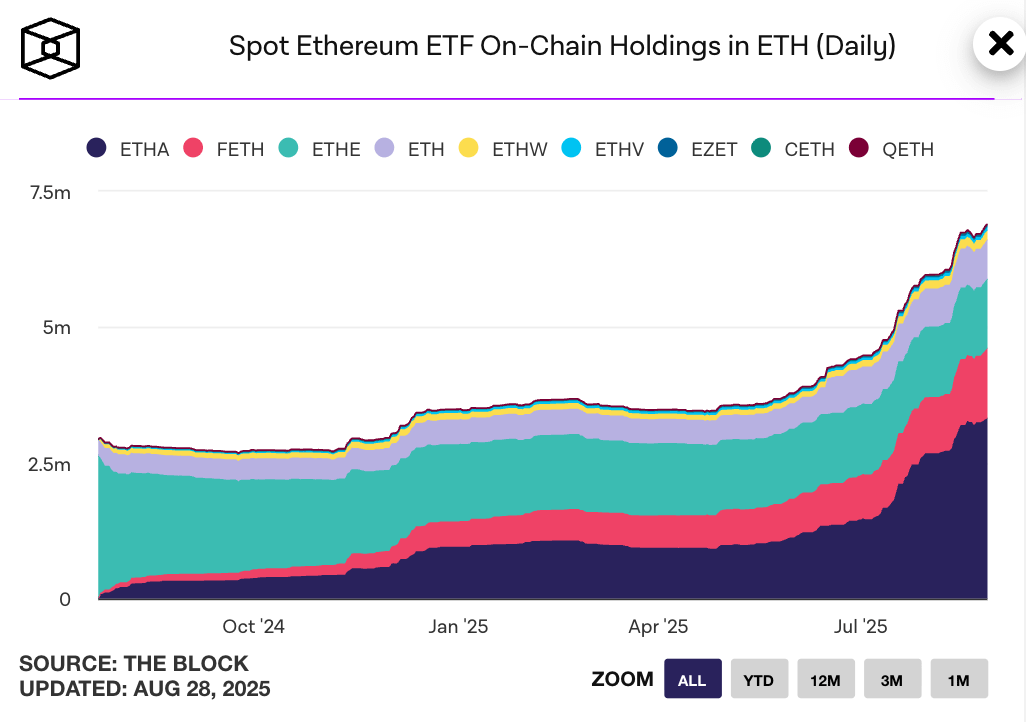
Listed Companies
As of now, 17 listed companies collectively hold 3.5 million ETH, accounting for 2.9% of Ethereum's total supply.
The top ten hold approximately 3.8 million ETH, including:
- Bitmine Immersion: 1.8 million ETH, with a 30-day change of +186.8%, currently the largest single holding institution.
- SharpLink Gaming: 797,000 ETH, with a 30-day change of +82.0%.
- The Ether Machine: 345,000 ETH, with a 30-day change of +3.2%.
Others like ETHZilla and FG Nexus are also gradually increasing their holdings.
Overall, Bitmine and SharpLink have the strongest increases, representing the emerging "coin-stock" force; while Coinbase, Bit Digital, and others have more stable increases.
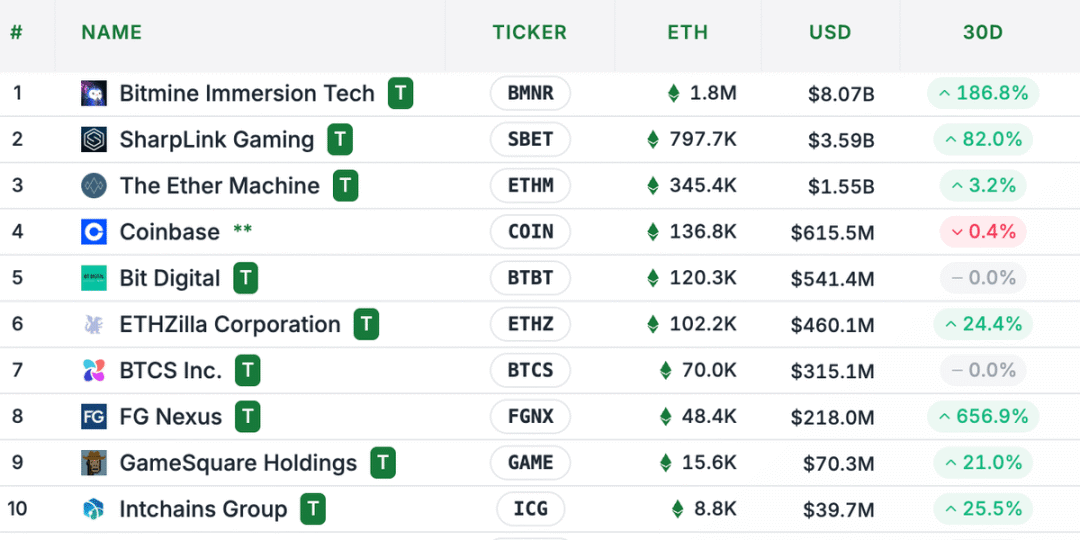
Foundations
Currently, the Ethereum Foundation holds approximately 231,600 ETH, accounting for about 0.19% of the total supply.
Although the scale is not large, this portion of funds serves as a long-term strategic reserve. The foundation generally sells a small amount of ETH periodically to support research and development, community grants, and operations, which essentially constitutes "healthy selling pressure."
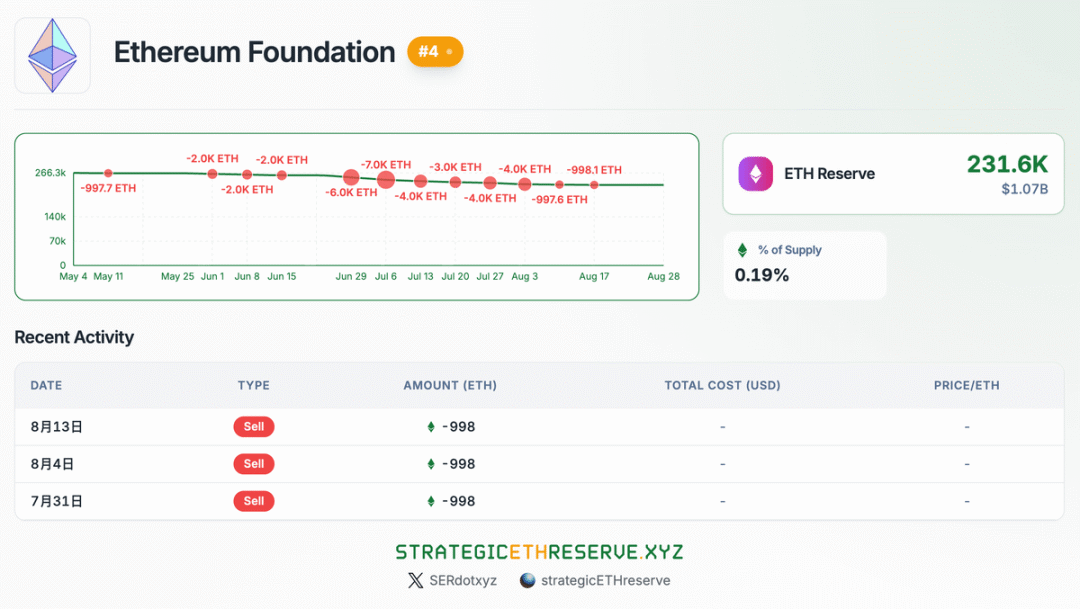
Staking
Currently, approximately 36.137 million ETH are staked, close to 30.1% of the current total supply, with staking scale reaching new highs. These locked ETH effectively reduce the circulating supply, thereby decreasing selling pressure from a supply-demand perspective.
Staking means reduced liquidity, but it has also given rise to new derivative tracks such as LST and re-staking. This is also the biggest difference between ETH and BTC; ETH is a productive asset that can generate yield.
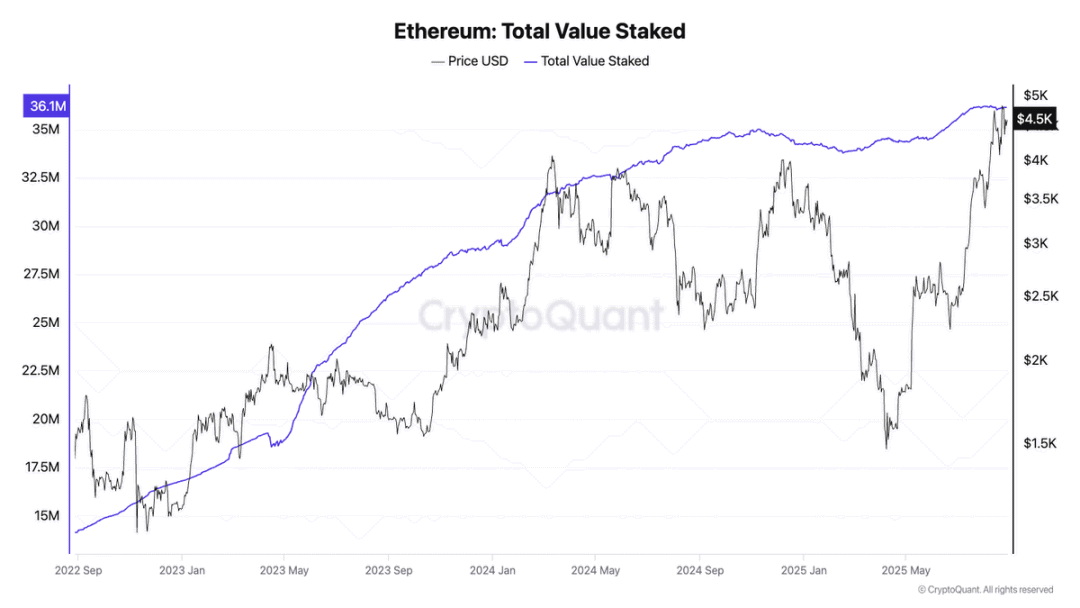
Exchanges and Whales
Exchange reserves: Currently about 17.845 million ETH, accounting for 14.8%, which is a recent low. This indicates that more people are choosing to stake or hold ETH long-term, leading to a decrease in ETH available for sale on exchanges.
Whales: There are still a few whales on-chain holding hundreds of thousands of ETH, which could create significant market volatility at any time. For example, Rain Lohmus, the founder of LHV Bank, holds 250,000 ETH, accounting for about 0.2% of the total supply, and his wallet has not made any transactions since 2015, now valued at over $1 billion, but it is said that he may have lost the private key. Another example is the "7 Siblings" (a mysterious group of whales on-chain) holding over 1.2 million ETH. As of 2025, whale addresses (holding 10,000-100,000 ETH) collectively control about 22% of the ETH supply.
Recently, an on-chain mysterious institutional whale was tracked quietly building a position of over 200,000 ETH in mid-August, with funding sources including FalconX, Galaxy Digital, and BitGo.
This rotation of large funds often amplifies market volatility.
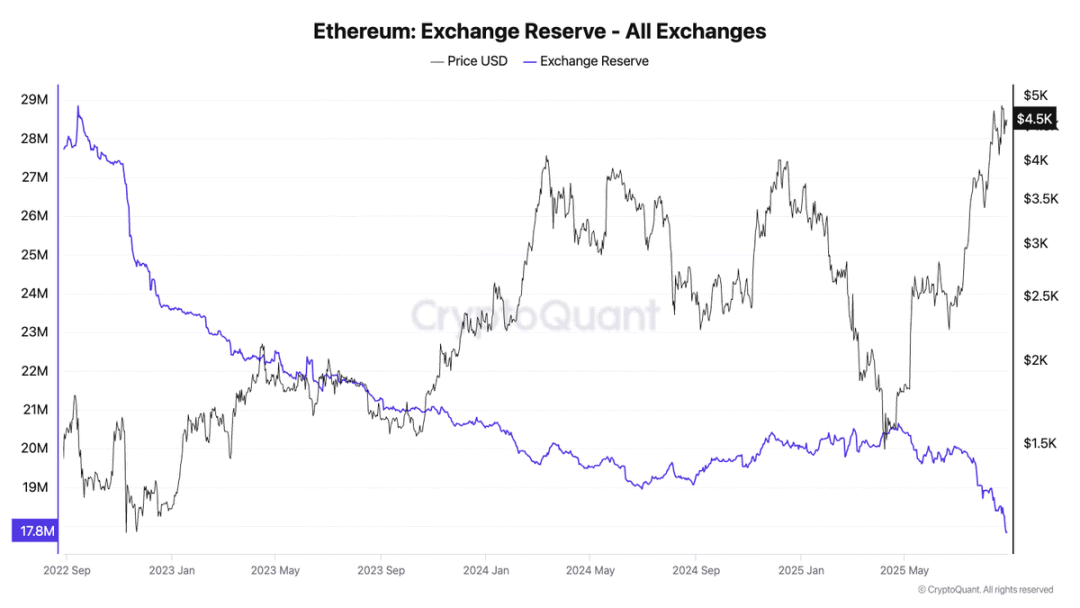
DeFi Protocols
Currently, about 41.35% of ETH has been locked in staking, DeFi, and other contracts, almost accounting for half of the circulating supply.
Among them, about 13.5 million ETH (approximately 11.25% of the total supply) is locked in various DeFi protocols and cross-chain bridges, reflecting that ETH is widely used for ecological applications rather than being idle.
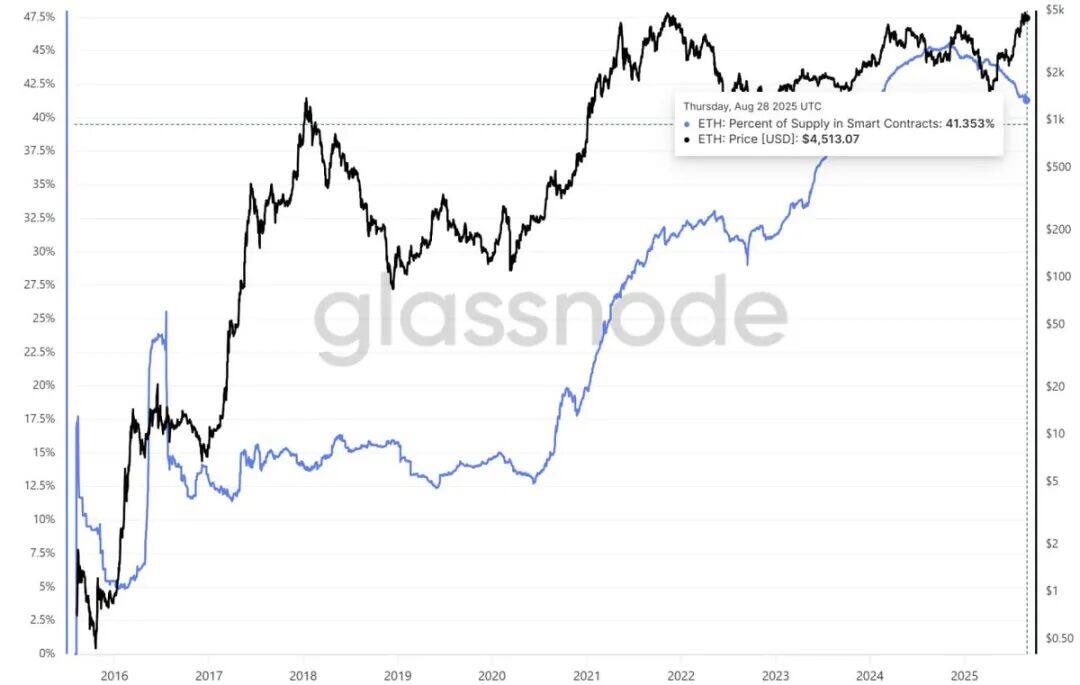
Vitalik Buterin
According to Arkham data, Vitalik Buterin personally holds about 240,000 ETH, accounting for about 0.2%.
In the total of 120 million ETH, this proportion is not high, but the significance of Vitalik's holdings lies more in its "signal effect":
When he sells coins, the market speculates whether it is for donations or simply for reducing his holdings.
When he accumulates coins, it represents confidence in the long-term value of ETH.
Therefore, the market even considers Vitalik's transfers as "short-term indicators." This level of attention, in turn, is also a special narrative for ETH.
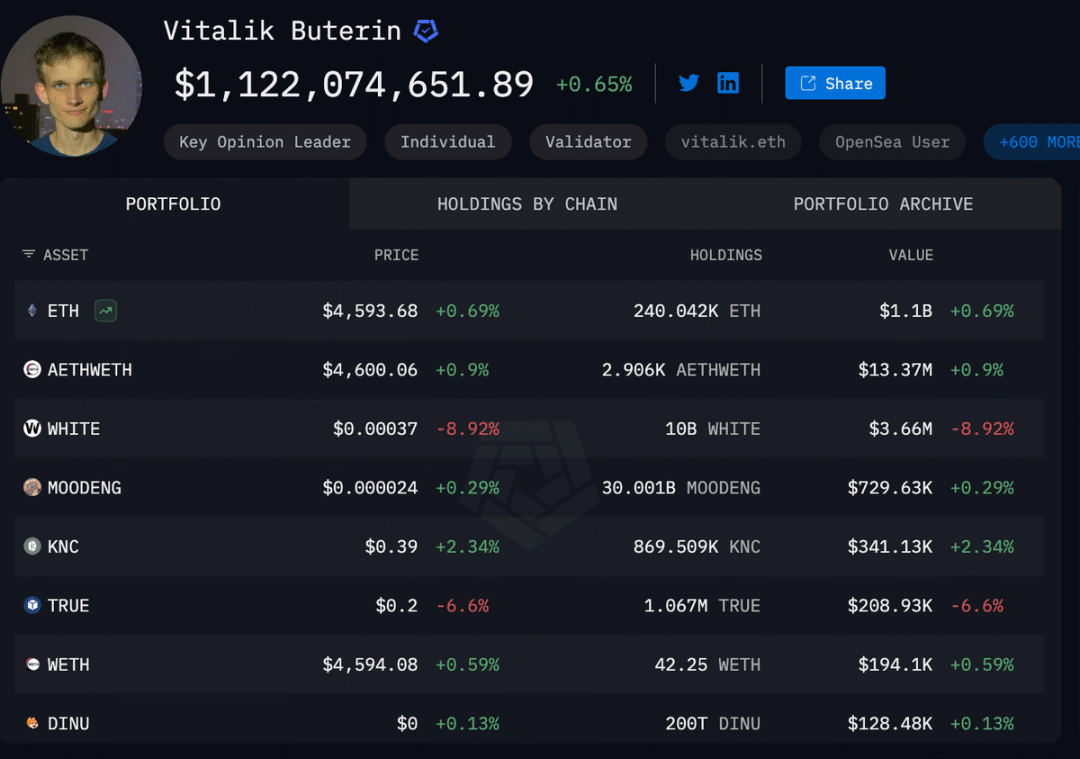
Government Holdings
According to disclosed data, governments around the world collectively hold about 64,500 ETH, accounting for about 0.05% of the total supply.
- U.S. government: approximately 60,000 ETH, valued at about $270 million.
- Michigan state government: approximately 4,000 ETH, valued at $8 million.
- Government of Bhutan: approximately 495 ETH, valued at $2.2 million.

Celebrity Endorsements
In addition to discussing the funding structure, this article also briefly mentions recent celebrity views on ETH.
EthHub co-founder @sassal0x: proposed six months ago that ETH prices are expected to break $15k in 2025, and has recently maintained an optimistic bullish outlook.
BitMEX co-founder @CryptoHayes: recently reiterated the view that ETH is expected to reach $10k–$20k.
Bitmine CEO Tom Lee @fundstrat: believes that ETH will reach $15k within this year.
LD Capital founder @Jackyi_ld: believes ETH is expected to break the new high against BTC, targeting above $10k.
(The above views are for reference only; Biteye is merely relaying them and does not make any recommendations!)
Other Holdings
In addition to staking, ETFs, exchanges, and foundations, over 55 million ETH are categorized as "other," mainly composed of various sources:
Retail investors: a large but dispersed number, with individual addresses holding small amounts, yet collectively forming the market's base.
Early dormant wallets: including accounts that lost private keys early on, such as Rain Lohmus, who still holds about 250,000 ETH untouched.
Unpublicized institutional holdings: some venture capital and unlisted companies hold ETH but may not appear in public reports.
Summary
Looking at these channels together, the holdings of ETH have formed a layered funding network.
After Bitcoin ETFs brought in hundreds of billions in incremental funds, the "redistribution of ETH holdings" has just begun. If the past valuation logic of ETH was "technology + narrative," then the future will be more about "capital + liquidity."
This pattern suggests that ETH may be closer to being an "institutional asset" than ever before.
免责声明:本文章仅代表作者个人观点,不代表本平台的立场和观点。本文章仅供信息分享,不构成对任何人的任何投资建议。用户与作者之间的任何争议,与本平台无关。如网页中刊载的文章或图片涉及侵权,请提供相关的权利证明和身份证明发送邮件到support@aicoin.com,本平台相关工作人员将会进行核查。



